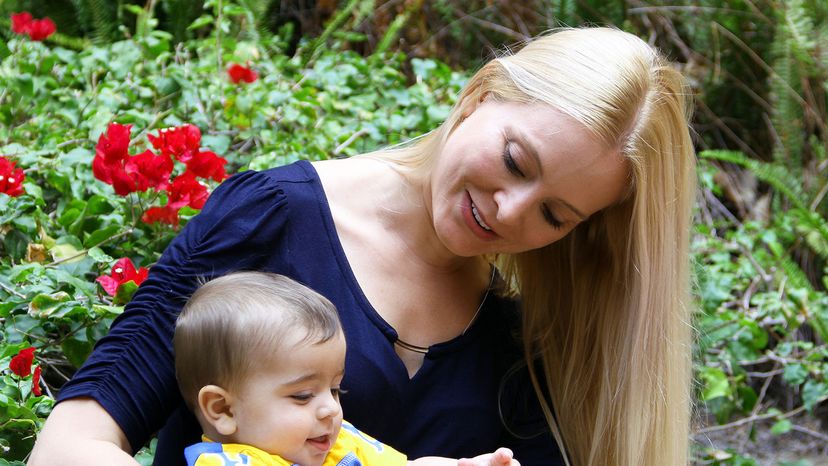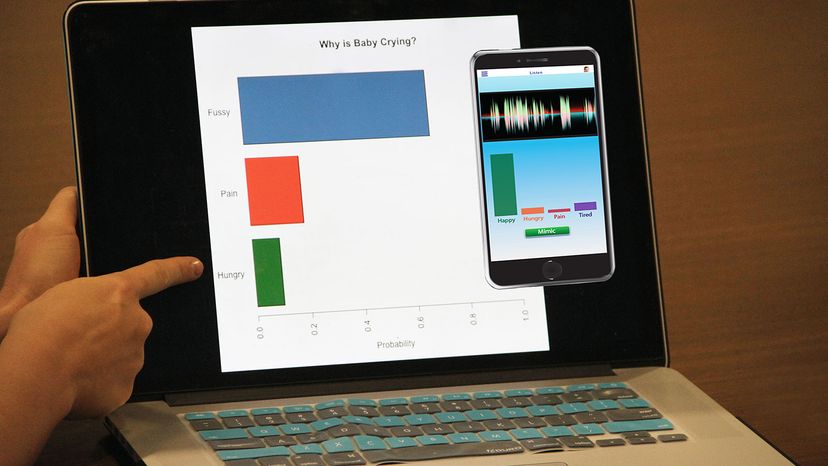 “Ariana Anderson, Ph.D., an assistant professor at UCLA Semel Institute and a mother of four, used her own experiences a mother to create the ChatterBaby app. UCLA Health
“Ariana Anderson, Ph.D., an assistant professor at UCLA Semel Institute and a mother of four, used her own experiences a mother to create the ChatterBaby app. UCLA Health
Babies don’t come with a manual, but a new app is helping to take some of the guesswork out of their cries. Known as ChatterBaby, the free app (available in iOS or Android) was initially created to help deaf parents figure out what their child needs, since they are not able to hear the nuanced differences in the sound of cries.
But even people with full hearing have trouble differentiating between whether Junior’s hungry, fussy or in pain, so the app has morphed into more of a universal tool than the inventor originally imagined.
The app is the brainchild of Dr. Ariana Anderson, assistant professor of residence at the UCLA Semel Institute for Neuroscience and Human Behavior, who spent five years developing it along with a team of volunteers. A mother of four herself, she eventually learned how to tell her kids’ cries apart, but it took a while, as is the case with many new parents. "My inspiration for this project was really just the curiosity of assessing whether the patterns I saw in my own children were present in other children," she explains. "I wanted to see whether or not I could train a machine to identify what I’d learned already as a parent."
The app initially launched with a database of about 2,000 cries gleaned from volunteers and internet sources who provided recordings of their babies crying, along with explanations for the cause. The team used machine learning to develop an algorithm that identified the characteristics of each type of cry, like changes in pitch, frequency, pauses and other characteristics. Using this information, the algorithms correctly identified features that predict pain, fussiness or hunger more than 90 percent of the time. For instance, if a cry is constant and at high volume it’s likely to mean the baby is in pain.
 “The ChatterBaby app analyzes a baby’s cry to help deaf — and hearing parents — identify the baby`s needs. UCLA Health
“The ChatterBaby app analyzes a baby’s cry to help deaf — and hearing parents — identify the baby`s needs. UCLA Health
"It can be confusing to understand why a baby cries differently for different needs," Anderson says. "We can understand that some biologic states are physiological responses, for example, when someone’s in pain you can see it in their face," she explains, adding that this visual cue is not all that different from how it’s possible to "see" differences in the pitch of a high-energy cry.
Once downloaded, users can opt to be part of a study aimed at improving the app’s accuracy and keeping tabs on their child’s development. When parents record cries, they can also tag them with labels like, "needs a diaper change." Anderson says this will help her team to eventually include more crying causes in the app.
App With a Purpose
The rate of autism among deaf children is about twice that of hearing children and Anderson hopes this app will help users identify autism in their children earlier.
"Babies who are at risk for autism and those that aren’t can have different cries," Anderson says, noting that existing research in this area is limited to small sample sizes and has not been verified globally. This study hopes to correct this issue by inviting users to participate in free private, online behavior screening, which could signal a parent to have the child professionally assessed for autism.
Since the child’s cries have hopefully been recorded since early infancy, once a diagnosis is made (or not), the app can map the differences between the cries of a child with autism or other disorders. "This is important because we know that in our country children who are from lower income families get diagnosed with autism later. We believe we can improve the outcomes for children with autism by catching it early," Anderson explains. Indeed, although autism can be successfully diagnosed beginning at age 24 months, the average age of diagnosis is 4 and a half, with Latino children often not getting diagnosed until age 6. This disparity is often due to lower-income families having little access to diagnosis and reduced awareness of the disorder.
Currently, the plan is to follow babies for six years because most autism diagnoses are made by that age, says Anderson. She’s planning to automate as much of the research as possible, in order to "maximize the number of people we reach with it."
She notes that the app, which launched in May 2018, is being used around the world, in countries like Japan, China, Russia and Iraq. "It’s wonderful because one of our goals for this project was to reach out to countries where they might not have as many services as us."
Now That’s Interesting
French and German babies (and probably those in many other foreign-language environments) are actually born with different melodies to their cries than babies in other parts of the world. This is due to the accent they hear in their mothers’ voices while in the womb.



























